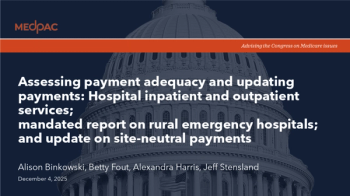
Health care’s fax problem is still hurting patients
Key Takeaways
- Fax machines persist in healthcare, with 88% of practitioners citing negative impacts on patient care due to fax-related delays.
- Manual processing of faxes is prevalent, causing postponed appointments, incomplete records, and increased misdiagnosis risks.
Nearly nine in ten health care practitioners say fax-related delays disrupt patient care, according to a new Documo survey.
For all the talk of digital transformation in health care, the fax machine is still standing in the middle of it — and slowing everything down.
According to Documo’s
“Reducing the signal to noise ratio issues in health care communications is critical to drive administrative efficiency and more importantly, patient outcomes,” said Denis Whelan, CEO of Documo.
Manual overload and missed information
Despite two decades of
The consequences are immediate. When faxes are delayed or misrouted, patients can face postponed appointments, incomplete medical records or rescheduled procedures. The report warns that these gaps raise the risk of misdiagnosis, incorrect prescriptions and compliance violations.
In hospitals and other high-volume settings, the problem is even worse — where 45% or more of all inbound documents still arrive by fax. Clinics, nursing facilities and residential treatment centers reported higher manual workloads and frequent delays when splitting multi-page documents.
Automation confidence gaps
Only 29% of respondents said their workflows are fully automated — but those who did expressed far greater confidence in their routing accuracy and compliance.
Documo found a clear link between automation and trust in document flow.
By contrast, organizations relying heavily on manual processes reported chronic time loss, tracking errors and growing staff frustration. The report argues that intelligent document processing (IDP) and cloud fax tools could help health care systems regain visibility and reduce the “IT fire drills” caused by outdated systems.
Hospitals were more confident in their routing (81%) than clinics (56%) or residential facilities (51%), but they also reported the highest number of fax-related claim delays — an average of 59 per year, roughly double that of other facilities.
Fixing fax to build digital momentum
Even as
The report suggests that modernizing fax systems could be a practical starting point for broader automation efforts. Compliance, patient safety and claims accuracy topped the list of priorities among respondents, and fax modernization projects tied to those outcomes were most likely to win executive support.
AI-enabled features such as patient matching, document identification and summarization were seen as especially valuable to administrators seeking to streamline intake and triage processes.
A system struggling to catch up
For many physicians, fax has become a symbol of health care’s uneven progress toward modernization — a relic that remains indispensable simply because too many systems still can’t communicate.
Documo’s survey makes one thing clear: the tools to replace fax already exist. What’s missing is the time, resources and collective will to finally move on.
Newsletter
Stay informed and empowered with Medical Economics enewsletter, delivering expert insights, financial strategies, practice management tips and technology trends — tailored for today’s physicians.















